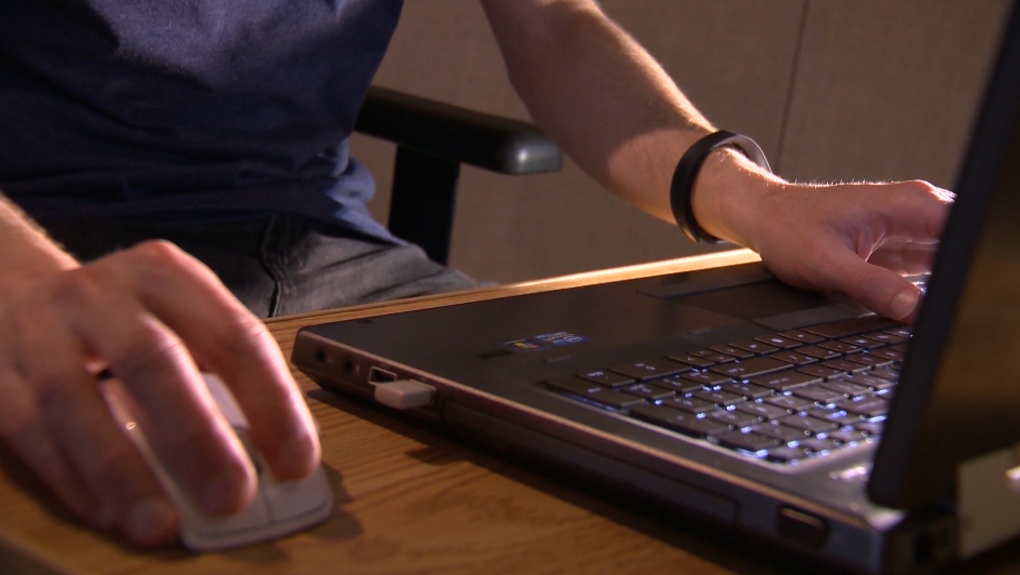Alberta to invest $390M in high speed internet for rural, remote and Indigenous communities

Alberta is more than doubling its investment in rural broadband to $390 million as part of a strategy to make high speed internet available across the province, including in rural, remote and Indigenous communities.
Premier Jason Kenney announced the funding Wednesday at the Innisfail Public Library, along with Service Alberta Minister Nate Glubish.
The $390 million from the province will come over four years, said Kenney. In late 2021, the province and federal government announced a 50-50 partnership on a $300 million investment in rural broadband. Provincial officials said Wednesday they are seeking a funding partner for the $240 million increase.
Around 489,000 Albertans living in 201,000 households lack access to federal target speeds of 50 megabits per second (Mbps) for downloads and 10 Mbps for uploads, according to the province.
And about 80 per cent of Indigenous communities and 67 per cent of rural and remote communities do not have access to reliable, high-speed internet.
Along with making the digital world more accessible to rural Albertans, the investment will also mean an economic boost for the whole province, said Kenney.
"Improving access to high-speed broadband will help the province move forward toward a technology and innovation-focused future where every Albertan can participate in and benefit from Alberta’s recovery and economic diversification," he said.
"It’s the next step for Alberta.”
The province touted a number of benefits it expects to come from achieving universal connectivity and adoption of services, including:
- Annual GDP will rise between $500 million and $1.7 billion;
- The agricultural sector’s GDP will grow up to five per cent;
- Resulting from adoption of AgTech up to 2,000 long-term service industry jobs may be created;
- In rural communities up to 40,000 Albertans without access to a primary health-care provider may have improved access to telehealth, and the cost to deliver those services will be reduced, and;
- More than 120,000 students will have improved access to remote education.
Glubish said investment in Indigenous communities would be part of the initial stages of the plan.
CTVNews.ca Top Stories

Trudeau, Carney push back over Trump's ongoing 51st state comments
Two senior members of the federal cabinet were in Florida Friday pushing Canada's new border plan with Donald Trump's transition team, a day after Trudeau himself appeared to finally push back at the president-elect over his social media posts about turning Canada into the 51st state.
Calgary Boxing Day crash victim identified, mother and sister still in hospital
A nine-year-old girl has died in hospital after the vehicle she was in was struck by a driver in a stolen vehicle fleeing from police.
Missing dog returned to family home and rang the doorbell
After a nearly weeklong search, Athena, a four-year-old German Shepherd and Husky mix, found her way home to her Florida family in time for Christmas Eve and even rang the doorbell.
Five southern Ont. hunters fined $37K for moose hunt offences in northern Ont.
A multi-year moose hunting investigation resulted in five people being convicted of moose hunting offences and fined a total of $37,000, plus $9,250 in victim surcharges.
Gerry Butts says Trudeau less likely to remain leader since Freeland quit
A former chief adviser and close friend to Prime Minister Justin Trudeau says he doesn't think Trudeau will stay on to lead the Liberals in the next election.
'Home Alone' director Chris Columbus explains how the McCallisters were able to afford that house
Audiences have wondered for years how the family in 'Home Alone' was able to afford their beautiful Chicago-area home and now we know.
Trump says Microsoft's Bill Gates has asked to visit him in Florida
Donald Trump said Microsoft co-founder Bill Gates has asked to visit him at the president-elect's Mar-a-Lago home in Florida on Friday night.
B.C. man charged with dangerous driving after elderly Good Samaritan killed in crash
A man is facing multiple charges of dangerous driving following a collision that led to the death of an 80-year-old Good Samaritan on Vancouver Island, B.C.
Halifax Thunderbirds player Tyson Bell suspended, cited for assault in Colorado
The Halifax Thunderbirds has suspended player Tyson Bell following an alleged assault in Colorado.

































